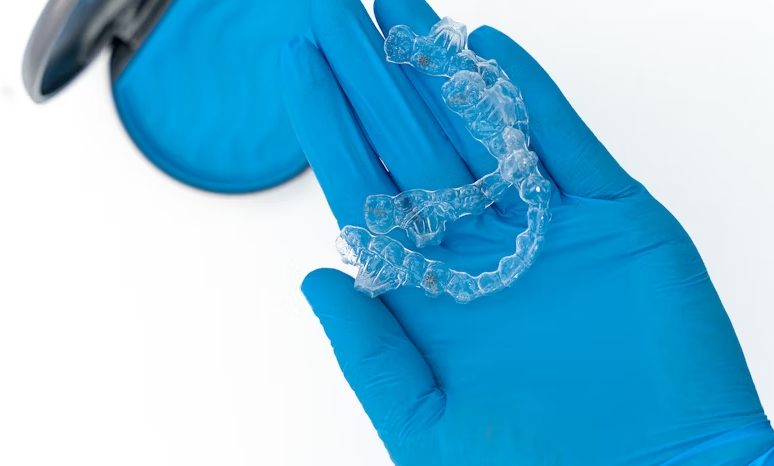
@ShahidNShah


Clear aligners have become a popular choice for straightening teeth. But can they also address bite issues like overbites, underbites, and open bites? The answer depends on the type and severity of the problem. This article explains when clear aligners work well, when other treatments are needed, and how digital planning supports successful outcomes.
A “bite” describes how your upper and lower teeth meet. In a normal bite, the upper teeth slightly overlap the lower teeth. Problems arise when this overlap becomes excessive (overbite), insufficient (underbite), or misdirected (crossbite). Severe misalignment can lead to tooth wear, jaw strain, and gum problems. According to the MedlinePlus overview of malocclusion, bite issues may also cause speech difficulties or discomfort when chewing.
Bite severity exists on a spectrum. Mild cases may only affect tooth positioning, while severe ones involve jaw structure. An orthodontist evaluates whether your bite issue is dental (teeth only) or skeletal (jaw-related). This distinction guides whether aligners alone, braces, or surgery are appropriate.
Clear aligners are best suited for mild-to-moderate bite problems where tooth movement, not jaw repositioning, is needed. They can improve mild overbites, certain crossbites, and some open bites (especially when combined with small attachments or elastics). The AAO overview of what clear aligners can treat highlights their use for crowding, spacing, and minor bite discrepancies.
The process typically involves digital scans, a customised plan, and a series of trays worn about 22 hours per day. For many people, this approach can achieve meaningful improvement. In fact, many adults exploring clear aligners and overbite correction find that treatment fits around their lifestyle without the brackets and wires of traditional braces.
Some movements—like major tooth rotations or large jaw shifts—may still require braces, surgery, or a combination approach.
Not all bite problems can be corrected with removable trays. Severe skeletal discrepancies often need fixed braces or surgery. In these cases, orthodontists may recommend a combined approach—such as aligners plus elastics or temporary anchorage devices—to increase predictability.
When jaw position is the main issue, an oral or maxillofacial surgeon may be consulted. Medigy’s topic on orthognathic surgery overview (skeletal bite problems) explains how jaw surgery can correct significant overjet, underbite, or facial asymmetry. Knowing the threshold for referral helps patients set realistic expectations about what aligners alone can achieve.
One of the biggest advantages of aligner therapy is digital planning. Orthodontists create 3D simulations to stage tooth movements precisely and monitor progress remotely. This technology makes it easier to adapt treatment if trays don’t fit as planned.
Aligner care also benefits from an evidence-based approach. Clinicians combine research findings, professional expertise, and patient preferences to plan treatments. Medigy’s topic on evidence-based dentistry approach to treatment decisions reflects how integrating data improves outcomes. Patients gain clearer expectations about timelines, refinements, and maintenance.
Recent studies show aligners can close some open bites and correct mild overbites or underbites effectively, especially with elastics. For example, a 2024 PMC study on open-bite correction with Invisalign reports positive outcomes in selected cases.
However, research also notes variability in results due to patient compliance, case selection, and differing protocols. This means aligners are not a guaranteed fix for every bite issue. Discussing evidence with your orthodontist helps you understand what’s realistic for your situation.
Daily habits strongly influence aligner success. Most orthodontists recommend wearing trays at least 22 hours per day, changing them on schedule, and brushing after meals before reinserting. Consistency helps teeth track to the planned positions.
Be alert to signs you might need an in-person review—persistent pain, trays that no longer fit, or jaw noises that develop during treatment. Early attention allows your orthodontist to adjust your plan or escalate care if needed.
Clear aligners can correct many mild-to-moderate bite problems, including some overbites and open bites, when treatment is carefully planned and monitored. Severe skeletal issues may still require braces or surgery, but digital tools and evidence-based care improve predictability for appropriate cases. If you’re considering aligners for a bite issue, an orthodontist can assess your specific situation and guide you to the safest, most effective path.

Obsessive-Compulsive Disorder (OCD) can feel overwhelming, but structured care makes progress possible. With the right plan, individuals can learn to manage symptoms and regain control over their …
Posted Sep 29, 2025 Clinical Research
Connecting innovation decision makers to authoritative information, institutions, people and insights.
Medigy accurately delivers healthcare and technology information, news and insight from around the world.
Medigy surfaces the world's best crowdsourced health tech offerings with social interactions and peer reviews.
© 2025 Netspective Foundation, Inc. All Rights Reserved.
Built on Dec 5, 2025 at 1:29pm